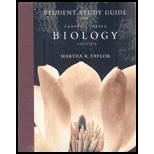
Concept explainers
Name the animal shown in the following diagram and indicate the chordate group to which it belongs. Identify the labeled structures and indicate the four chordate characters.

To name: The animals shown in the given diagram, indicate the chordate group to which it belongs, identify the labelled structure, and indicate the four characters of chordate.
Introduction: Deuterostomia is a sub taxon of Bilaterians. It includes chordates and echinoderms. A chordate is an animal belongs to the phylum Chordata. Chordates include urochordates, cephalochordates, and vertebrates.
Answer to Problem 1IQ
Pictorial representation: Fig.1 shows the labeled structure of lancelet and four characters of chordate.

Fig.1: Labeled structure of lancelet and four chordate characters
Explanation of Solution
The animal shown in the given (Fig.1) is lancelet and it belongs to the chordate group of Cephalochordata.
Lancelets are marine animal, which is tiny in nature. It retains complete four characteristics of chordate into the stage of adult. The adult lancelet, which is involved in suspension-feeding burrow backward to the soil and particles of food are filtered by a mucous net, which is produced across the pharyngeal slits. Using serial muscle contractions, the lancelet swims. The notochord is flex by these serial muscle contractions. From the mesoderm, these segments of muscle mature and it is called somites. It is found in all embryos of chordate.
Four chordate characters: In Fig.1, the symbol * indicates the derived characters of chordates. It includes notochord, dorsal, hollow nerve cord, pharyngeal slits, and a post-anal tail.
Notochord: It is a flexible chord and it gives skeletal support beside a length of embryos of chordate and in certain chordate adult.
Dorsal, hollow nerve: It develops into the spinal cord and the brain.
Pharyngeal slits: The pharyngeal grooves or clefts frequently develop into pharyngeal slits. The role of the pharyngeal slit is involved in suspension feeding or portion of head or function as gills.
A muscular, post-anal tail: It contains muscles and skeletal elements.
Want to see more full solutions like this?
Chapter 34 Solutions
Biology - Study Guide
Additional Science Textbook Solutions
Essentials of Human Anatomy & Physiology (12th Edition)
HUMAN ANATOMY
Human Physiology
Campbell Biology: Concepts & Connections (9th Edition)
- Figure 15.33 Which of the following statements about common features of chordates is true? a. The dorsal hollow nerve cord is part of the chordate central nervous system. b. In vertebrate fishes, the pharyngeal slits become the gills. c. Humans are not chordates because humans do not have a tail. d. Vertebrates do not have a notochord at any point in their development; instead, they have a vertebral column.arrow_forwardThere are two types of chordates the invertebrates and the vertebrates. How do invertebrate chordates differ from vertebrate chordates? (state in your own words and provide references if there are any)arrow_forwardIdentify the key characteristics of animals, and give an example organism for each group within the chordates.arrow_forward
- Describe the distinguishing characteristics of chordatesarrow_forwardDefine the Chordate characteristics ?arrow_forwardWhich of the following list places the important evolutionary innovations in the correct order of appearance in the chordate phylogeny? a. Vertebrae - bony skeleton - notochord - jaws - internal nares - lobe fins b. Jaws - notochord - bony skeleton - vertebrae - lobe fins - internal nares c. Notochord - jaws - vertebrae - internal nares - lobe fins - bony skeleton d. Notochord - vertebrae - jaws - bony skeleton - lobe fins - internal naresarrow_forward
- What are four key defining characteristics of chordates?arrow_forwardHow does Anterior posterior axis gives chordate and higher non chordates a bilateral symmetryarrow_forwardOffer a description of an adult tunicate that would identify it as a chordate, yet distinguish it from any other chordate group.arrow_forward
 Biology Today and Tomorrow without Physiology (Mi...BiologyISBN:9781305117396Author:Cecie Starr, Christine Evers, Lisa StarrPublisher:Cengage Learning
Biology Today and Tomorrow without Physiology (Mi...BiologyISBN:9781305117396Author:Cecie Starr, Christine Evers, Lisa StarrPublisher:Cengage Learning Concepts of BiologyBiologyISBN:9781938168116Author:Samantha Fowler, Rebecca Roush, James WisePublisher:OpenStax College
Concepts of BiologyBiologyISBN:9781938168116Author:Samantha Fowler, Rebecca Roush, James WisePublisher:OpenStax College Biology: The Dynamic Science (MindTap Course List)BiologyISBN:9781305389892Author:Peter J. Russell, Paul E. Hertz, Beverly McMillanPublisher:Cengage Learning
Biology: The Dynamic Science (MindTap Course List)BiologyISBN:9781305389892Author:Peter J. Russell, Paul E. Hertz, Beverly McMillanPublisher:Cengage Learning


